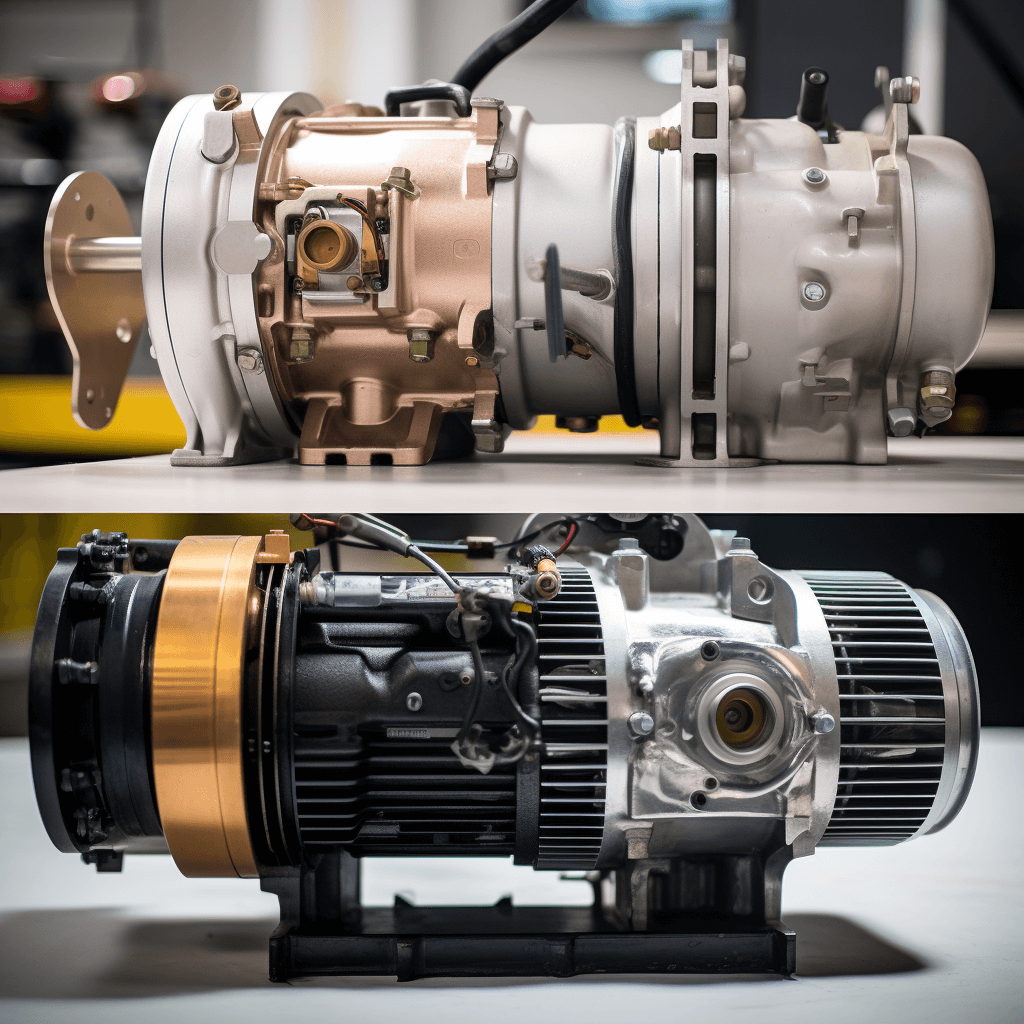The Great Debate: Top-Mounted vs. Bottom-Mounted Compressors
In the bustling world of commercial refrigeration, every detail matters. At AirGreen, Montreal's premier HVAC service provider, we've seen firsthand how the right choices can make a world of difference. One of the most debated topics among our clients is the choice between top-mounted and bottom-mounted compressors. Let's dive deep into this subject and shed some light on the best choice for your business.
Understanding the Basics
Before we delve into the pros and cons, it's essential to understand what these terms mean:
-
Top-Mounted Compressor: As the name suggests, this compressor is located on the top of the refrigeration unit. It's often seen in larger commercial units.
-
Bottom-Mounted Compressor: Positioned at the base of the refrigeration unit, this compressor is typically closer to the ground.
Advantages of Top-Mounted Compressors
-
Heat Dispersion: Heat rises. With the compressor on top, the heat it generates doesn't affect the refrigerated space below, ensuring more consistent temperatures inside the unit.
-
Extended Lifespan: These compressors tend to have a longer lifespan because they're away from the dust and debris that often accumulate at floor level.
-
Ease of Maintenance: Being at eye level, top-mounted compressors are generally easier to access and maintain.
Advantages of Bottom-Mounted Compressors
-
Energy Efficiency: Cold air sinks. With the compressor at the bottom, the unit doesn't have to work as hard to keep the top cold, leading to potential energy savings.
-
Ergonomics: With the refrigeration components at the bottom, the storage space is at a more accessible height, reducing the need for staff to bend or reach high shelves.
-
Ideal for High-Temperature Areas: If your establishment gets particularly hot, a bottom-mounted compressor might be more efficient as it's closer to the cooler ground.
Factors to Consider When Making Your Choice
-
Operational Needs: Consider the volume of products you need to store and how often your staff accesses the unit. If it's frequent, the ergonomic benefits of a bottom-mounted unit might be more appealing.
-
Maintenance Routine: If you have a dedicated maintenance team, they might prefer the accessibility of a top-mounted compressor. However, if you're outsourcing, the choice might not make a significant difference.
-
Energy Consumption: Review your energy bills. If they're on the higher side, the energy efficiency of a bottom-mounted compressor might be more attractive.
-
Space & Layout: The design of your commercial space might favor one type over the other. For instance, if you have low ceilings, a top-mounted unit might not be ideal.
AirGreen's Expert Recommendation
While both types of compressors have their merits, the best choice often boils down to individual business needs. At AirGreen, we pride ourselves on offering tailored solutions. Our team of experts will assess your specific requirements, from spatial constraints to energy consumption patterns, and recommend the best fit for your establishment.
Conclusion: Making an Informed Decision
The debate between top-mounted and bottom-mounted compressors isn't about which is universally better, but rather which is better for your business. By understanding the advantages of each and considering your operational needs, you can make an informed decision that benefits your bottom line and ensures optimal performance.
Remember, in the ever-evolving world of HVAC, knowledge is power. And when in doubt, the AirGreen team is just a call away, ready to guide you with expertise and a touch of Montreal flair.

